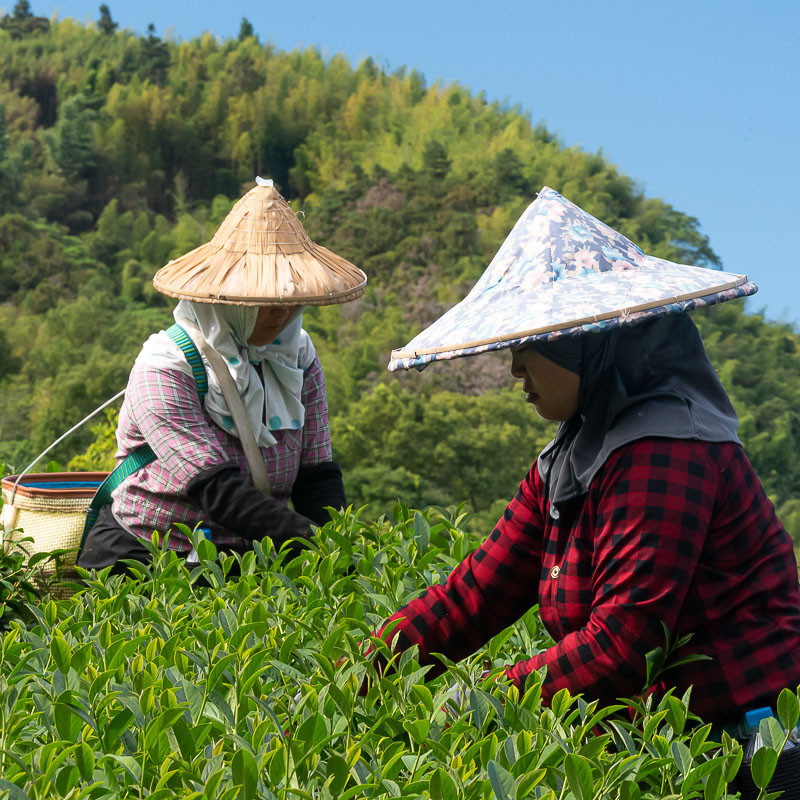2021 Fall 'Tie Guan Yin' Oolong from Ali Shan
Tax excluded
Cultivar: Qingxin Oolong
Harvested by hand on August 28th 2021
Origin: ChangShu Hu, Alishan (1300 m), Taiwan
Process: Medium oxidation, rolled Oolong, medium roast.
1. View
The dark green/brown dry leaves are rather large. The dark orange brew looks very transparent and shiny! The leaves have not opened up completely, but they are very soft. Their color is also lighter than when dry.
2. The scents
The dry fragrances are quite fascinating. On the one hand their are some very light forest notes and on the other hand, when placed in the preheated gaiwan, they exhale warm chocolate scents! The brew is more typical of finely roasted Tie Guan Yin. It's quite light and ripe fruity. And the cold scent shouldn't be missed as well! It's quite powerful and a sign of good quality. The roast aromas are intense in the wet leaves.
3. The taste
The taste is very sweet and full body with a long aftertaste and a hint of freshness.
Conclusion: This is a very interesting tea, because the farmer has used Qingxin Oolong from his Alishan plantation and processed them like a traditional Tie Guan Yin. And it comes very close to what (traditional) Tie Guan Yin to tastes like! The oxidation and roasting process took 5 days instead of just 1 for normal high mountain Oolong. A lot of skill and experience have gone into these leaves! The reason for this experiment is that in fall, the temperatures are usually too high to make very fresh high mountain Oolong (spring and winter seasons are more suited for high mountain Oolong). So, since the Tie Guan Yin process requires more oxidation, it's actually a good idea to do so during fall, when it's warmer!







